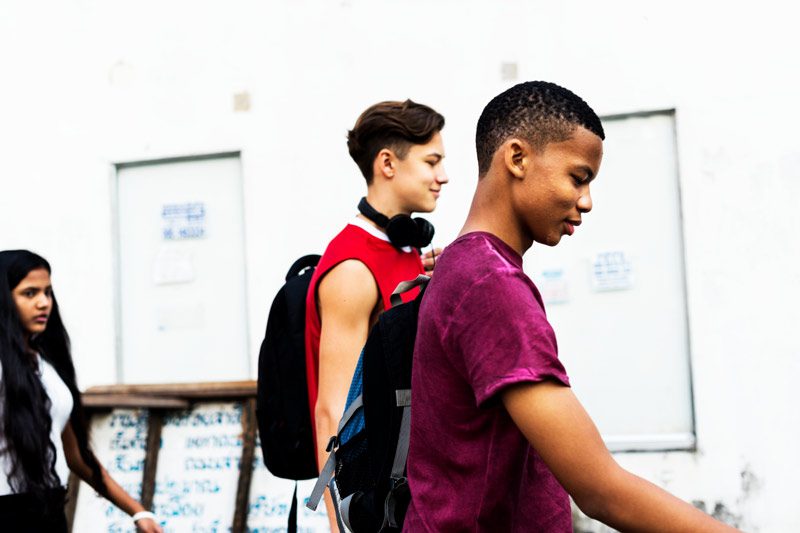The numbers are in, and for those of us who have worked with teens for years, what we feared would happen is finally happening. Teen mental illness, self-harm, and suicide attempts have risen dramatically. Educators, mental health practitioners, and researchers connect this sudden upsurge to social isolation and loss of structure caused by the COVID-19 pandemic. It makes sense.
We have not seen numbers like this before. The mental health system is stretched beyond its capacity, struggling to accommodate those who need help. We must do everything we can to reverse this trend—to get to these kids before they cut, before the voices set in, and before the suicide attempt occurs. The nation’s schools are a great place to draw a line in the sand—to dig in, reach out, and prevent self-harm and suicide.
But are we doing all we can, and are we doing it with urgency? In a recent post on rtor.org, I highlighted the importance of addressing the teen mental health crisis with a sense of immediacy. Now I will be more specific: put up a sign.
Shortly before the pandemic shutdowns, I was on a school district speaking tour. They brought me in to address social media addiction, depression, and coping skills. I spent all day at the school, walking the halls with the principal and chair of the guidance department.
Workshops are Not a Stand-Alone Solution
The principal began to rattle off all they had done to combat teen mental illness and self-harm. “We have sent all our counselors to mental health sensitivity training,” he said. “All our staff attended the workshop on suicide awareness the state mandates, and one of the deputies came in and did a presentation on how to identify teens that may be suffering a mental health crisis and may be about to transition to violent behavior.”
“Do the students know you have done any of that?” I asked.
All I got was confused silence.
“Do students know what to do if they have a panic attack or visions of hurting themselves or planning to hurt themselves?”
“Well, they know they can come to us.”
“Do they?” I asked. “I have been on campus all day and have not seen one sign, one poster, or any other messaging that tells the students you are there for them.”
“Well, they know,” was the annoyed response.
“During a mental health crisis, teens don’t know much,” I responded. “They are not processing reality. They may be hearing voices or seeing things that are not there. In the midst of all this, how would they know to come see you?”
I have had this conversation countless times in schools throughout the United States. “How do students know you have been trained and want to help them?” I frequently get answers that do not account for the fear and confusion teens experience while having a mental health crisis.
Expecting a Teen to Act Rationally While They Are Having Irrational Thoughts Is… Not Rational
There are many solutions to this challenge, and one is quite simple: put up signs. Very simple, but I rarely see them. I’m not talking about multiple slick posters you bought from an online supplier. The kids can take one glance at them and tell there was no thought involved. Nor am I talking about the poster series with a blank box on the bottom where you can write in the contact information.
I’m talking about something produced in-house—something students can look at and immediately know it was created for them. Perhaps the guidance department can work with the art department to produce a series of posters that includes the school name and mascot with a reassuring message. There could be a school-wide competition open to any student that would like to participate. Once the winners are selected, and a design approved, the guidance office could run them off and add a contact name and information. Human beings want to communicate with a person, not an organization.
Personal Messaging is Effective
Put up signs. Put them throughout campus. The girl walking rapidly to the restroom to make herself throw up may have forgotten that there is even an option for help—that there are options not to do what she is thinking of doing. She asked for a pass mid-class, so the halls and restroom would be empty. Her footsteps echoing down the corridor accent her aloneness. But just before she enters the bathroom, there is a poster taped to the wall. It’s not even that well done. The lack of professional polish makes it stand out more to her short-circuiting brain. She sees the school mascot and name. The sign was made for her. She sees the school counselor’s name—she knows who it is and can match a face to it. She takes out her phone and texts the number listed. She gets help. She lives.
Putting up in-house messaging with a real person’s contact information save lives.
About the Author: Keith Deltano is an award-winning public educator, parent coach, and internationally touring educational speaker. He is the creator of a character education video curriculum and is also a mental health speaker. www.DontBullyOnline.com.
Image by www.rawpixel.com
The opinions and views expressed in any guest blog post do not necessarily reflect those of www.rtor.org or its sponsor, Laurel House, Inc. The author and www.rtor.org have no affiliations with any products or services mentioned in the article or linked to therein. Guest Authors may have affiliations to products mentioned or linked to in their author bios.
Recommended for You
- Why a Mental Health Retreat Can Transform Your Recovery Journey - December 11, 2025
- Laughter as Therapy: How Humor Supports Emotional Recovery - December 8, 2025
- When Teenage Stomach Pain Signals Anxiety: A Pediatric GI Doctor Explains - December 4, 2025





